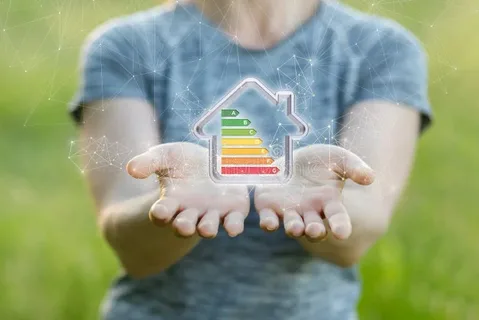Mobile homes offer affordable and flexible living options, but maintaining their energy efficiency can be a challenge. One of the most impactful ways to enhance energy efficiency in a mobile home is through underpinning. This often-overlooked improvement provides significant benefits beyond aesthetics, making it a valuable investment for homeowners. Let’s explore how mobile home underpinning boosts energy efficiency and contributes to a more comfortable and cost-effective living environment.
Table of Contents
What Is Mobile Home Underpinning?
Mobile home underpinning, also known as skirting, involves installing a protective barrier around the base of a mobile home. This barrier encloses the space between the ground and the home, sealing off the undercarriage. Materials like vinyl, metal, and concrete are commonly used for underpinning, with options like DURASKIRT™ offering durable and energy-efficient solutions.
Reducing Heat Loss
One of the primary ways underpinning improves energy efficiency is by reducing heat loss. Without underpinning, the exposed undercarriage of a mobile home can become a significant source of heat transfer, allowing warm air to escape during winter and hot air to seep in during summer. Properly installed underpinning acts as an insulator, creating a thermal barrier that stabilizes the internal temperature of the home.
By minimizing heat loss, underpinning helps homeowners rely less on heating and cooling systems, leading to lower energy bills and a smaller carbon footprint.
Preventing Drafts and Air Leaks
Drafts and air leaks are common problems in mobile homes, especially in the absence of underpinning. Gaps and openings under the home can allow cold or hot air to infiltrate, making it difficult to maintain a consistent indoor temperature. High-quality underpinning seals these gaps effectively, preventing drafts from disrupting home comfort.
This enhanced airtightness not only boosts energy efficiency but also contributes to improved indoor air quality by reducing the entry of dust, allergens, and pests.
Protecting Plumbing and Utilities
Mobile home underpinning provides a layer of protection for plumbing, electrical systems, and HVAC components located beneath the home. Exposed pipes are particularly vulnerable to freezing during cold weather, which can lead to energy inefficiencies and costly repairs.
By insulating and shielding these utilities, underpinning ensures they operate efficiently and remain in good condition year-round. This not only saves energy but also reduces the likelihood of unexpected breakdowns.
Reducing Moisture and Humidity
Excess moisture and humidity under a mobile home can lead to energy inefficiencies and structural issues. Damp environments encourage mold growth and wood rot, which can compromise the home’s insulation and make it harder to regulate indoor temperatures.
Underpinning acts as a moisture barrier, keeping the area beneath the home dry and free from excess humidity. By preventing moisture-related issues, underpinning helps maintain the integrity of the home’s insulation and reduces the strain on heating and cooling systems.
Enhancing Overall Insulation
Many mobile homes lack sufficient insulation, particularly in the flooring. Underpinning provides an extra layer of protection that complements the home’s existing insulation. By reducing heat transfer and blocking external elements, underpinning significantly improves the overall thermal efficiency of the home.
With better insulation, mobile homeowners can enjoy a more comfortable living environment while reducing energy usage and utility costs.
Lowering Energy Bills
The combined effects of reduced heat loss, fewer drafts, and improved insulation translate into tangible savings on energy bills. For mobile homeowners looking to maximize cost-efficiency, underpinning is a practical and effective solution.
Over time, the energy savings achieved through underpinning can offset the initial installation costs, making it a financially sound investment. Homeowners also benefit from increased property value and enhanced curb appeal, further boosting the return on investment.
Environmental Benefits
Improving energy efficiency through underpinning also has positive environmental impacts. By reducing reliance on heating and cooling systems, mobile homeowners can lower their greenhouse gas emissions and contribute to a more sustainable future. Durable and eco-friendly underpinning materials, such as those offered by DURASKIRT™, further enhance the environmental benefits of this upgrade.
Key Considerations for Mobile Home Underpinning
When choosing underpinning for a mobile home, it’s important to consider the following factors:
- Material Quality: Opt for durable and energy-efficient materials that provide long-lasting protection.
- Proper Installation: Professional installation ensures airtight seals and maximum energy efficiency.
- Ventilation: Adequate ventilation is essential to prevent moisture buildup and maintain a healthy environment under the home.
- Climate Adaptation: Select materials and designs that suit your region’s climate conditions.
A Smart Investment for Energy Efficiency
Mobile home underpinning is more than just a cosmetic improvement; it’s a smart investment in energy efficiency, comfort, and sustainability. By reducing heat loss, preventing drafts, protecting utilities, and enhancing insulation, underpinning transforms mobile homes into more energy-efficient living spaces.
Mobile home underpinning solutions like DURASKIRT™ offer homeowners a reliable and effective way to upgrade their homes while saving money on energy bills. Whether you’re looking to improve your home’s performance or reduce its environmental impact, underpinning is a simple yet powerful solution that delivers lasting benefits.


